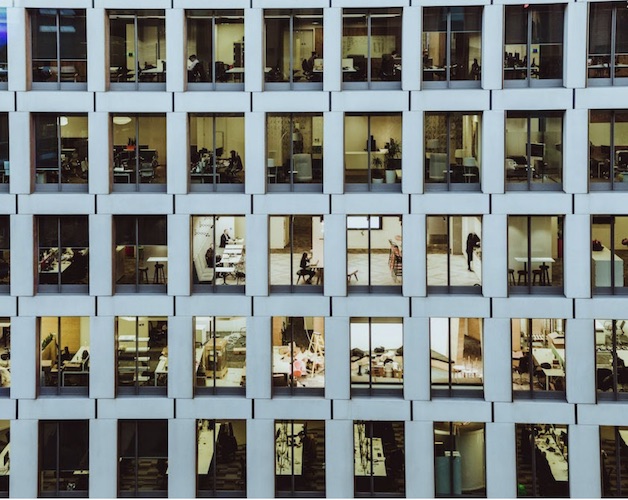A detailed study for a group of central and inner London boroughs has concluded that reports of a post-Covid “death of the office” have been exaggerated, but that the quality and type of office space employers are now seeking has significantly changed in a new age of hybrid working.
In a 75-page report for the Central London Forward partnership, built environment consultants Arup – working with property specialists Gerald Eve and the London School of Economics – assess recent changes in use of offices in the heart of the capital, how demand might evolve over the next 20 years and its policy and economic implications.
Conclusions include that the market for offices in the City of London has become the most exposed to new working patterns, and that “local economies in more residential locations stand to benefit” from this as a “new normal” for office attendance rates emerges over the next year or so.
However, the report also identifies “a huge opportunity to embrace the best of home working and in-person working” if employees adapt to the combination more fully, stressing that “the benefits to the economy that come from employees locating together need to be protected” but also arguing that the option to work from home “may help to widen and diversify central London’s labour pool” as well as having substantial benefits for individuals.
By the summer of this year office attendance levels appeared to be “just under half those of 2019”, the report says, with peaks in the middle days of the working week, but at the same time “quarterly office take-up has now returned to the pre-pandemic average” due to factors including constrained supply, and what it calls a “flight to quality”, but that future investment in offices could be imperilled by the unfavourable economic climate.
Office occupiers are increasingly interested in “flexible spaces that can accommodate a wide variety of activities” in buildings with “high quality sustainability credentials” and plenty of meeting spaces conducive to collaboration. These more specific and exacting requirements spell bad news for “peripheral, low quality spaces” the report says.
Another key finding is that central London’s leisure and culture activities are of “fundamental” importance to maintaining the appeal of using office space, with many employers saying that “variety and stimulation outside of the office is beginning to matter more than proximity to other businesses”. This should ensure that the City and also the West End continue to be desirable places to locate if rental prices are right.
The report recommends that the Central London Forward boroughs promote a “best of both worlds” approach to hybrid working which should include continuing to emphasise the centre’s value as an area for collaboration and agglomeration”, support a “managed transition” of less desired office premises to different uses, such as good quality residential, championing the arts, entertainment and public realm, and lobbying for the abolition of VAT on “low carbon refurbishments” for sectors with “bespoke needs”.
Read the Arup led report, entitled The Future of the Office in Central London, in full here. Image shows Two Pancras Square from report cover, by Dylan Nolte.
Originally posted on onlondon.com
Demand for central London office space holding up but changing, new report finds

